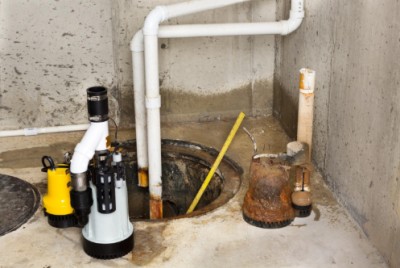Pipe Replacement 101: How Often Should Real Estate Plumbing Be Inspected?
 What if there was already a countdown to the destruction of your home?
What if there was already a countdown to the destruction of your home?
It may sound like we’re talking about a hidden bomb. However, this hidden threat is no bomb: it’s your pipes.
Pipe inspection and pipe replacement must be a regular part of your life as a homeowner. Otherwise, you’re just counting down to a flooded or otherwise damaged home.
Wondering exactly how often you should be inspecting your plumbing? Keep reading to discover the answer!
Know the Material
As you know, different pipes are made of different kinds of material. And this type of material helps to determine how long the lifetime of the pipe maybe.
For example, galvanized steel looks nice and sturdy. But it has a relatively short lifespan and may need to be replaced after only 20 years.
Brass is better than steel, but it may still need to be replaced after 40 years. Copper is a bit better with a lifespan of at least 50 years. Surprisingly, PVC pipes, when taken care of, can last a lifetime.
Keep in mind that “lifespan” is relative. Pipes of all materials may be subjected to damage or various conditions that decrease that lifespan. This is where regular inspection is so important.
Pipe Replacement: Playing It Safe
With those potentially very long pipe lifespans, you might think that you can wait a really long time between inspections. However, we recommend having your pipes inspected every 2 years.
As we said before, most pipes are damaged by unexpected forces or events. The relatively long lifespan of a type of pipe doesn’t mean that it will not be damaged by an unforeseen event. Therefore, the only way to check that nothing has happened is by regular inspection.
Inspections at 2-year intervals assume you are settled in your home and that nothing major has recently happened to the house. There are other scenarios, however, that demand more regular inspections.
Old Home Blues
If you have an older home, such as one from the 1980s or earlier, you should consider more frequent inspections. The reason for this is the likely material of your pipes.
Back then, builders loved to use steel for their pipes. The idea was that steel helps to provide strength and stability to the whole structure.
However, galvanized steel can only last so long. Like we said before, the lifespan of this steel is as short as 20 years, and it is unlikely to last longer than 40 years or so.
For a home this old, it’s worth scheduling an immediate inspection. If the pipes are still in good condition, we recommend an annual inspection to stay on the safe side.
New Home: Second Inspection
You likely had your home inspected before you closed on the mortgage. But if you recently moved into a new home, it’s worth scheduling an immediate pipe inspection.
Why should you not simply trust in the home inspector’s report? Simple: the home inspector may or may not have much experience with plumbing.
It’s possible that he overlooked some warning signs that an experienced plumber would notice. And replacing such pipes early on can help you to avoid disaster down the line.
As long as you are checking on the quality of your pipes and other plumbing, it’s worth scheduling a sewer camera inspection for maximum peace of mind.
The Forest for the Trees
When we think about pipes and pipe insections, most of us are thinking about the interior of our homes. However, the exterior of your house may provide a clue that you need more frequent inspections.
If your yard has large and mature trees, it may mean you need to immediately inspect your pipes. Because what is good for nature is not always good for your home.
Older trees have an extensive root system that is difficult to detect. In fact, you often don’t know how far such a system extends until it begins damaging your pipes.
Such roots can cause both small and large leaks in your underground pipes. And they are strong and forceful enough to push through the PVC pipes that might otherwise last indefinitely.
When you’re surrounded by large trees, don’t be afraid to contact an experienced plumb for an inspection. They may be able to detect warning signs you would otherwise overlook.
More Obvious Signs
Sometimes, the signs of a damaged pipe are not very hidden. In fact, they may be downright obvious!
There may be visual clues about bad plumbing that include cracking, leaking, or corroded pipes. Wet baseboards and warped floors are a sign of major leaks.
Meanwhile, low pressure can be a major warning sign. This may be a result of an unseen leak or a clogged drain.
Slow draining is a major sign, as is the presence of mold. And remember to pay special attention to weird noises (such as gurgling or erratic rattling) from pipes that indicate the presence of trapped air.
All of these are signs that you should immediately inspect the pipes. If you don’t feel comfortable doing the whole inspection yourself, it’s worth contacting local professionals to help out.
To Replace or Repair: That Is the Question
So far, we have focused on pipe replacement. This assumes that you have pipes that are old enough or damaged enough that that replacement is the only option.
If the damage is less severe or the pipes are relatively new, then the repair may be a better option. And it is an option that can often save you a decent sum of money.
This is because repairs are typically cheaper than outright replacement. And if you have the ability to repair your own pipes, you’ll be able to fix problems such as faulty connectors or blocked pipes without anyone else’s help.
Pipe Replacement: More Than a Pipe Dream
Now you know the secrets to pipe replacement. But do you know how to save money for both replacement and repair?
We help people just like you save money while avoiding all of the financial pitfalls and perils. To see how we can help you save money, check out our podcast today!





